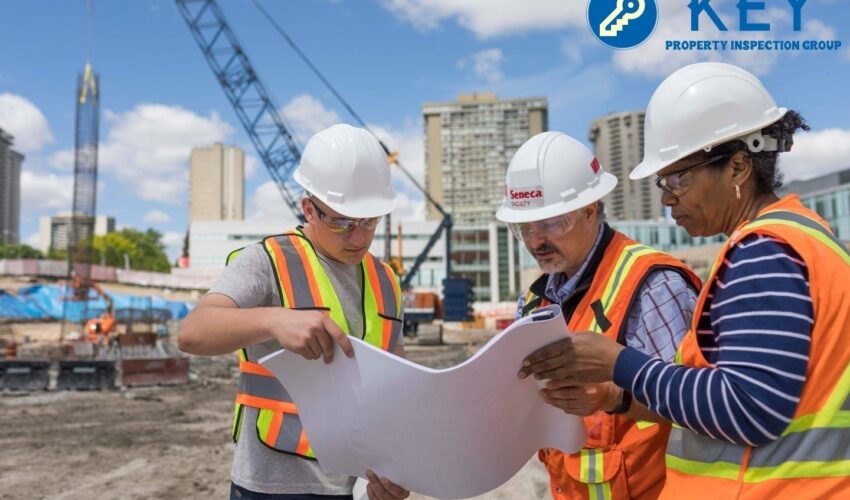- Pre-purchase inspection
- Home warranty inspection
- New construction inspection
- Radon inspection
- Lead-based paint inspection
- Mold inspection
- Termite inspection
- Roof inspection
- Septic system inspection
- HVAC inspection.
 Home warranty inspection
A home warranty inspection is a type of inspection that is performed when a homeowner is purchasing a home warranty. The purpose of the inspection is to identify any existing conditions or systems that may be excluded from coverage under the home warranty policy.
The inspector will evaluate the home’s systems and appliances, such as the heating and cooling systems, plumbing, electrical systems, and appliances, to ensure that they meet the criteria for coverage under the warranty. Based on the results of the inspection,
the homeowner may be able to negotiate coverage for certain excluded systems or conditions. The inspection can also help the homeowner understand the condition of the systems and appliances in their home and identify any potential issues that may need to be addressed.
more information: Facebook, YouTube, Instagram
New construction inspection
A new construction inspection is an inspection that is performed during the construction process of a new building. The purpose of the inspection is to verify that the construction is being done in accordance with building codes and regulations, and that the structure is being built according to the approved plans and specifications.
The inspector will review the progress of the construction and check for compliance with building codes, safety regulations, and construction standards. The inspector will also identify any potential problems or issues that need to be addressed before the building is completed.
A new construction inspection can provide the homeowner with peace of mind and ensure that the building is constructed to the highest standards of quality and safety. The inspection is usually performed at various stages of the construction process, such as the foundation, framing, and final stages, to ensure that the building is being built according to the approved plans and regulations.
Lead-based paint inspection
A lead-based paint inspection is an evaluation of a building or a home to determine if it contains lead-based paint. Lead-based paint was commonly used in homes and buildings built before 1978 and can pose a significant health risk if it is disturbed or becomes contaminated.
The purpose of a lead-based paint inspection is to identify the presence of lead-based paint in a building and to determine the extent of the contamination. The inspector will use specialised equipment and techniques to sample and test the paint for the presence of lead. Based on the results of the inspection,
The inspector will provide a report indicating the presence of lead-based paint and its location, as well as recommendations for abatement or remediation. Lead-based paint inspections are typically required when a property is being sold or renovated, and are an important step in protecting the health and safety of building occupants.
Termite inspection
A Key Property Inspection Group is an evaluation of a building or home to determine if it is infested with termites. Termites can cause significant damage to the structure of a building, so it is important to detect and treat an infestation as soon as possible.
The purpose of a termite inspection is to identify the presence of termites and their extent of damage, as well as to determine the potential for future infestations. The inspector will use a combination of visual inspections and specialised tools to search for evidence of termites and their damage. Based on the results of the inspection,
the inspector will provide a report indicating the presence or absence of termites, the extent of the infestation, and recommendations for treatment. Termite inspections are typically required when a property is being sold or as a preventative measure to protect a homeowner’s investment in their property.
HVAC inspection.
An HVAC (heating, ventilation, and air conditioning) inspection is an evaluation of a building’s heating and cooling systems to determine their condition and efficiency. The purpose of the inspection is to identify any issues with the HVAC system, such as outdated equipment,
inefficiency, or potential safety hazards, and to provide recommendations for repair or replacement. The inspector will check the system’s components, such as the furnace, air conditioner, ductwork, and thermostat, to ensure that they are in good working condition. The inspector will also evaluate the system’s energy efficiency and make recommendations for improving efficiency.
Home warranty inspection
A home warranty inspection is a type of inspection that is performed when a homeowner is purchasing a home warranty. The purpose of the inspection is to identify any existing conditions or systems that may be excluded from coverage under the home warranty policy.
The inspector will evaluate the home’s systems and appliances, such as the heating and cooling systems, plumbing, electrical systems, and appliances, to ensure that they meet the criteria for coverage under the warranty. Based on the results of the inspection,
the homeowner may be able to negotiate coverage for certain excluded systems or conditions. The inspection can also help the homeowner understand the condition of the systems and appliances in their home and identify any potential issues that may need to be addressed.
more information: Facebook, YouTube, Instagram
New construction inspection
A new construction inspection is an inspection that is performed during the construction process of a new building. The purpose of the inspection is to verify that the construction is being done in accordance with building codes and regulations, and that the structure is being built according to the approved plans and specifications.
The inspector will review the progress of the construction and check for compliance with building codes, safety regulations, and construction standards. The inspector will also identify any potential problems or issues that need to be addressed before the building is completed.
A new construction inspection can provide the homeowner with peace of mind and ensure that the building is constructed to the highest standards of quality and safety. The inspection is usually performed at various stages of the construction process, such as the foundation, framing, and final stages, to ensure that the building is being built according to the approved plans and regulations.
Lead-based paint inspection
A lead-based paint inspection is an evaluation of a building or a home to determine if it contains lead-based paint. Lead-based paint was commonly used in homes and buildings built before 1978 and can pose a significant health risk if it is disturbed or becomes contaminated.
The purpose of a lead-based paint inspection is to identify the presence of lead-based paint in a building and to determine the extent of the contamination. The inspector will use specialised equipment and techniques to sample and test the paint for the presence of lead. Based on the results of the inspection,
The inspector will provide a report indicating the presence of lead-based paint and its location, as well as recommendations for abatement or remediation. Lead-based paint inspections are typically required when a property is being sold or renovated, and are an important step in protecting the health and safety of building occupants.
Termite inspection
A Key Property Inspection Group is an evaluation of a building or home to determine if it is infested with termites. Termites can cause significant damage to the structure of a building, so it is important to detect and treat an infestation as soon as possible.
The purpose of a termite inspection is to identify the presence of termites and their extent of damage, as well as to determine the potential for future infestations. The inspector will use a combination of visual inspections and specialised tools to search for evidence of termites and their damage. Based on the results of the inspection,
the inspector will provide a report indicating the presence or absence of termites, the extent of the infestation, and recommendations for treatment. Termite inspections are typically required when a property is being sold or as a preventative measure to protect a homeowner’s investment in their property.
HVAC inspection.
An HVAC (heating, ventilation, and air conditioning) inspection is an evaluation of a building’s heating and cooling systems to determine their condition and efficiency. The purpose of the inspection is to identify any issues with the HVAC system, such as outdated equipment,
inefficiency, or potential safety hazards, and to provide recommendations for repair or replacement. The inspector will check the system’s components, such as the furnace, air conditioner, ductwork, and thermostat, to ensure that they are in good working condition. The inspector will also evaluate the system’s energy efficiency and make recommendations for improving efficiency.

